A taste of Australia
ONE part of celebrating Australia Day is hosting a BBQ with friends and family. Watch live as the Herald Sun taste tests some of the best supermarket foods that you can buy ahead of your Oz Day gathering.
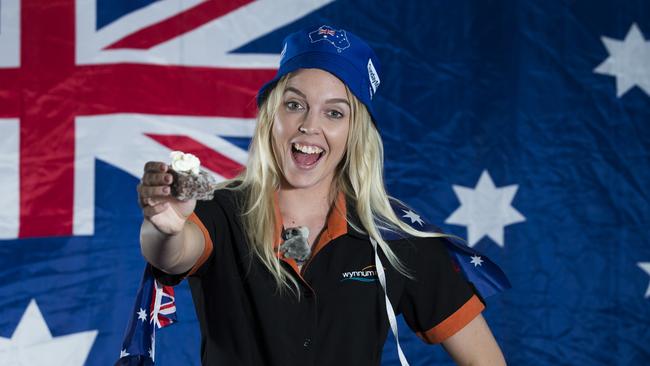
VIC News
Don't miss out on the headlines from VIC News. Followed categories will be added to My News.
ONE part of celebrating Australia Day is hosting a BBQ with friends and family.
A particular highlight for some is grazing Aussie snacks pre-meal, namely potato chips, cheddar cheese, crackers and assorted cold meats.
Today the Herald Sun is sampling some of the best supermarket finds that you can buy ahead of your Oz Day gathering, requiring little to no effort. (So there’s no need to worry about assembling that pavlova on Thursday night).
TUNE INTO THE HERALD SUN’S FACEBOOK PAGE FOR THE LIVE TASTE TEST AT 11.30AM TODAY.
Polly Waffles, IXL jam, Leggo’s pickles, Aeroplane Jelly and Darrell Lea soft eating licorice are some homegrown treats dripping in nostalgia. In this extract from her new book A Timeline of Australian Food, Jan O’Connell highlights some other Aussie gastronomic obsessions through the years.
BUMPER GUIDE TO WHAT’S ON THIS AUSTRALIA DAY
THE BEST SPICY FOOD IN MELBOURNE
EXPERIMENTAL VICTORIAN RESTAURANTS PUSHING THE BOUNDARIES
EAT REAL: EATING HEALTHY WITHOUT THE COST OR COMPROMISE
1895 BUNNIES IN THE FREEZER
THE rabbit plague of the late 19th century created winners and losers. While graziers and farmers saw their paddocks turn to wasteland, thousands of trappers and shooters found ready markets for their kill. In the 1860s and ’70s, canneries began to process the meat, while the skins were used for hatters’ felt. By the 1890s, the expansion of the railways and introduction of refrigerated railway cars made it viable to ship frozen meat, including frozen rabbit, to major cities and ports. In the year ending July 31, 1909, one rabbit-freezing plant, in Bungendore, NSW, handled more than 1.5 million rabbits. The plant employed 14 workers and over 250 trappers. In the early 20th century, “rabbitohs” hawked their wares around city streets, skinning their merchandise on the spot. Legend has it the South Sydney rugby league team acquired its Rabbitohs nickname because, in the 1920s, several players worked in the trade on Saturday mornings, later taking the field in their bloodied jerseys.
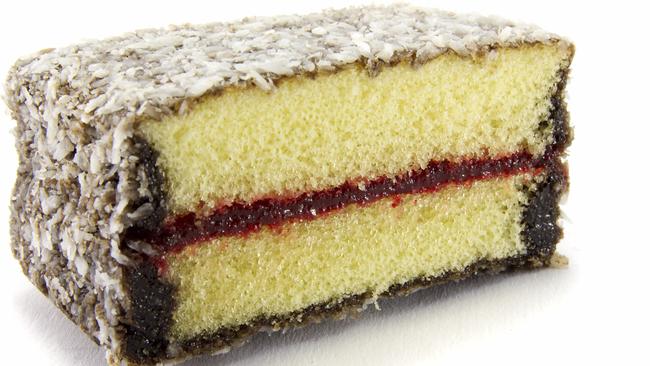
1901 THE LAMINGTON WARS
DID the lamington make its first appearance at Government House in Brisbane, at the opening of the Ipswich Technical College in 1901, or at Harlaxton House in Toowoomba, the governor’s summer retreat? The debate has raged for decades, although all sides agree this Aussie classic was invented in Queensland. The gooey chocolate and coconut-covered cubes are named after Queensland governor Lord Lamington and were almost certainly invented by his French chef Armand Galland. The chef had a Tahitian wife, which may account for the coconut, and the creation may have been a way of using up leftover sponge cake to cater for unexpected guests. Government House remains the most likely candidate. The fact that the first published recipe appeared in 1900 (in the Country Life newspaper) seriously undermines the Ipswich claim. However, Toowoomba is stubbornly sticking to its story and reputedly plans to erect a “big lamington” in commemoration.
1907 THE FIRST VB
IN the year Carlton & United Breweries began, VB was first added to the label of the Victoria Brewery’s Bitter Ale. In 2009, Victoria Bitter was claimed to be Australia’s only billion-dollar retail beer brand, selling the equivalent of one slab (24 x 375 ml cans) every second.
1914 THE FIRST COLES STORE
IT would be a long time before Coles started selling groceries, but G.J. Coles opened his first store in Collingwood, Victoria, in 1914. It was modelled on the “5 and 10 cent stores” common in the US and advertised “nothing over a shilling”.
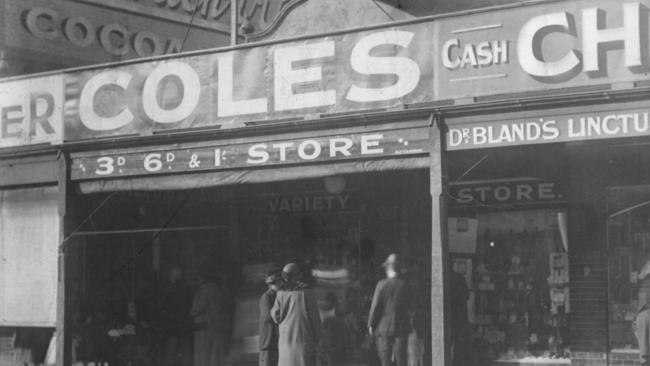
1920 ANZAC BISCUITS
■ 1 cup each of rolled oats, sugar and coconut
■ 1 tbsp golden syrup
■ ¾ cup flour
■ 2 tbsp butter
■ 1 tsp bicarbonate of soda (dissolved in 2 tbsp boiling water)
Melt butter. Add syrup to dissolved soda and water. Combine with melted butter. Mix dry ingredients and stir in liquid. Place small balls on hot buttered tray and bake in moderate oven. Lift out carefully with a knife as they are soft until cold.
From the Australian War Memorial website
1921 VIOLET CRUMBLE FIRST ADVERTISED
IT’S not certain when the first Violet Crumble was made, but a box of Violet Crumbles was advertised in 1921. The trademark was registered in 1923. Legend has it that Abel Hoadley named it after his wife’s favourite flower. But Abel retired in 1913 and died in 1918 — probably before Violet Crumbles were made.
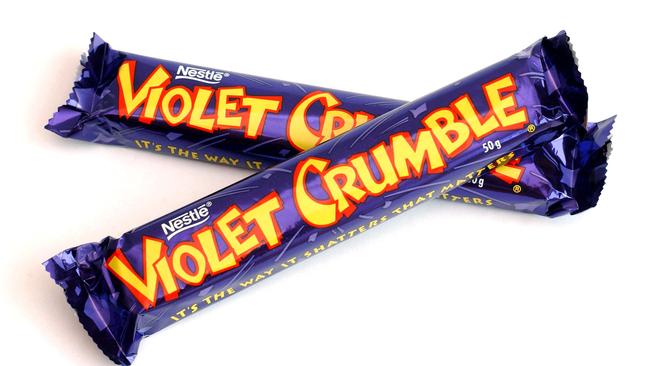
1927 FIRST RECORD OF DIM SIMS
MELBOURNE’S Argus proclaimed, “No Chinese meal is complete without some succulent dim sims (pork minced with water chestnuts and enclosed in paste), and such sweets as honeyed lychee nuts and honeyed ginger.” They probably weren’t the dim sims we know today, factory-produced by William Wing Young from 1945.

1929 FAIRY BREAD AS WE KNOW IT
THE first-known reference to fairy bread, meaning “hundreds and thousands” on bread and butter, was in the Hobart Mercury in 1929. Referring to a party for children from the Consumptive Sanatorium, it reported, “The children will start their party with fairy bread and butter and 100s and 1000s ...”
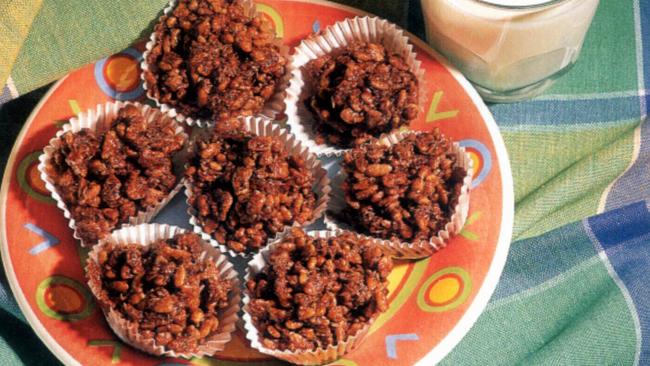
1937 ORIGINAL CHOCOLATE CRACKLES RECIPE
■ 5 oz (140g) Rice Bubbles (4 cups)
■ 8 oz (225g) icing sugar
■ 2½ oz (70g) fine coconut
■ 2½ oz (70g) cocoa (2 tbsp)
■ 8 oz (225g) copha
Mix dry ingredients, melt copha and pour over same. Thoroughly mix and spoon into paper cup containers and allow to set. The above quantity makes 2½ to 3 dozen.
The Australian Women’s Weekly, December 18, 1937
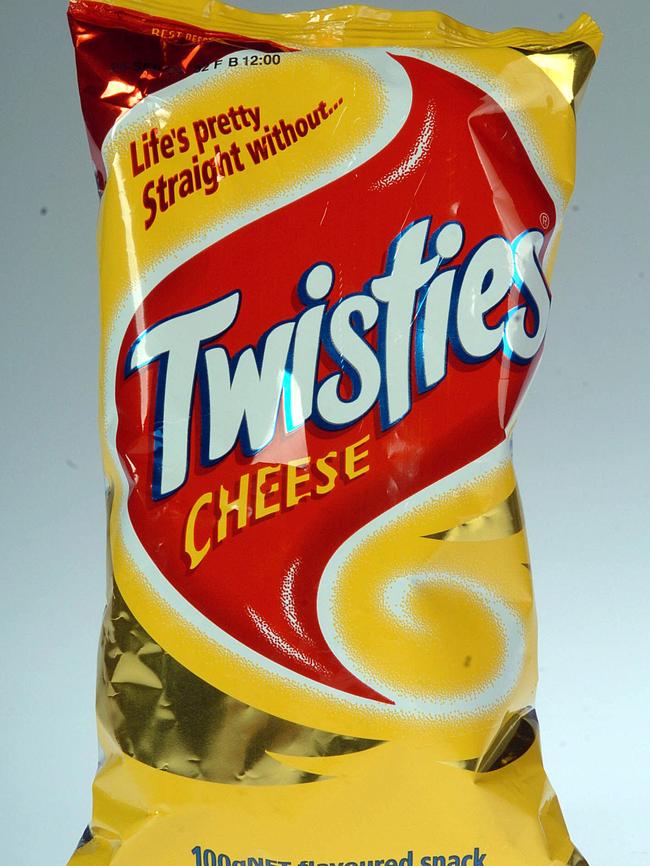
1950 TWISTIES INVENTED
TWISTIES were originally produced by General Foods Corporation. The Twisties brand was sold to The Smith’s Snackfood Company in 1964. It is now owned by PepsiCo.
1952 OUR FIRST ‘SPAG BOL’
IT was spelt the French way. It included Worcestershire sauce. And it was baked. The first time The Australian Women’s Weekly published a recipe for spaghetti “bolognaise”, it was just another casserole. But this was the forerunner of a dish that became one of Australia’s favourites. A survey by the Meat and Livestock people in 2009 found spaghetti bolognese was Australians’ third-most preferred dish after steak and roast chicken. The first recipe appeared in the July 9 issue of the Weekly in 1952 as part of a feature on party suppers.
1959 FRENCH ONION DIP
DRIED soups became an essential part of store-cupboard cookery in the 1950s. French onion soup was most famously used to make the ubiquitous dip, popular for 1950s drinks parties. It only had two essential ingredients and took just a few minutes to make.
■ ½ lb (250g) pack of Philadelphia cream cheese
■ Packet of Continental French onion soup
Have the cheese at room temperature for easy mixing. Put both ingredients in a bowl and mix. Serve surrounded by your choice of biscuits or chips.

1962 GETTING SPLICED
STREETS’ Pine-Lime Splice has become a classic taste of the Australian summer. The Splice trademark was first registered in 1961. Lime Splice appeared shortly afterwards. Raspberry Splice followed in 1963. The now-definitive Pine-Lime version came later.
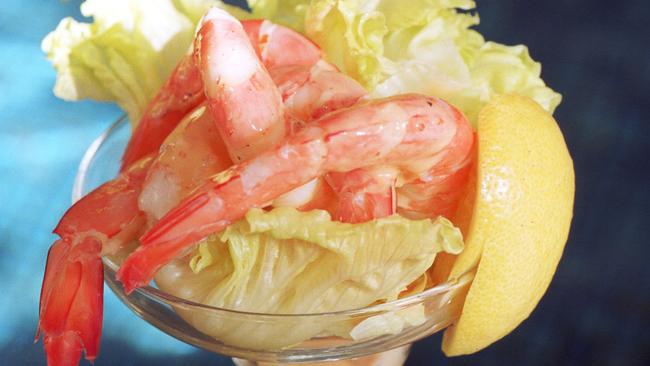
1960s SEAFOOD COCKTAIL
THIS classic ’60s starter was always on the menu in grand hotel dining rooms and could even be whipped up for dinner parties at home. Serves 4.
■ 1 cup (250ml) tomato sauce
■ 1 tbsp Worcestershire sauce
■ 1 tbsp lemon juice
■ Salt and pepper
■ 150ml cream
■ 1 iceberg lettuce, chopped
■ 500g mixed seafood (prawns, oysters, etc)
■ Chopped parsley, to garnish
■ Brown bread and butter, to serve.
Combine tomato sauce, Worcestershire sauce and lemon juice, and season to taste. Add the cream and mix well. Refrigerate until ready to serve. Line individual serving dishes with lettuce leaves and arrange the seafood on top. Pour over sauce, sprinkle with chopped parsley. Serve with brown bread and butter.
Recipe adapted from The Australian Women’s Weekly, December 1964
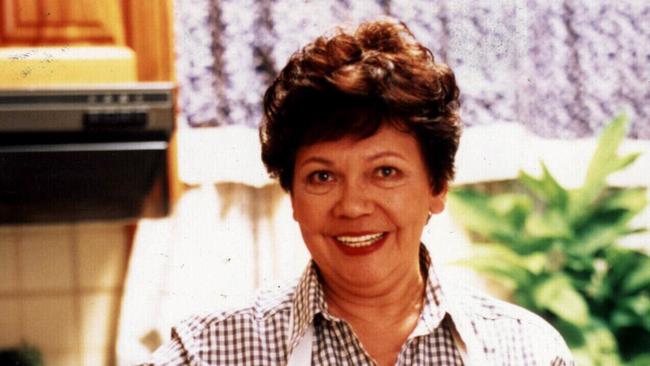
1976 CHARMAINE SOLOMON’S ASIAN COOKBOOK
BORN in Sri Lanka, Charmaine Solomon became one of Australia’s most prominent food writers. South-East Asian Food was published in 1972. But it was The Complete Asian Cookbook, published in 1976, that was most influential in introducing Australians to Asian cooking.
1978 LAUNCH OF BIG M
BIG M flavoured milk was launched in Victoria with overtly suggestive imagery of milk running down the cleavage of girls in bikinis. It competed with Coca-Cola as a “cool” teenage drink.

1980 AUSTRALIA’S BEST BIRTHDAY CAKES
THE Children’s Birthday Cake Book, first published by The Australian Women’s Weekly in 1980, went through many editions over the next 10 years. The famous swimming pool cake, choo choo train and fairy castle cake were among many fanciful creations that challenged a whole generation of mums (yes, pretty sure not too many dads got involved).
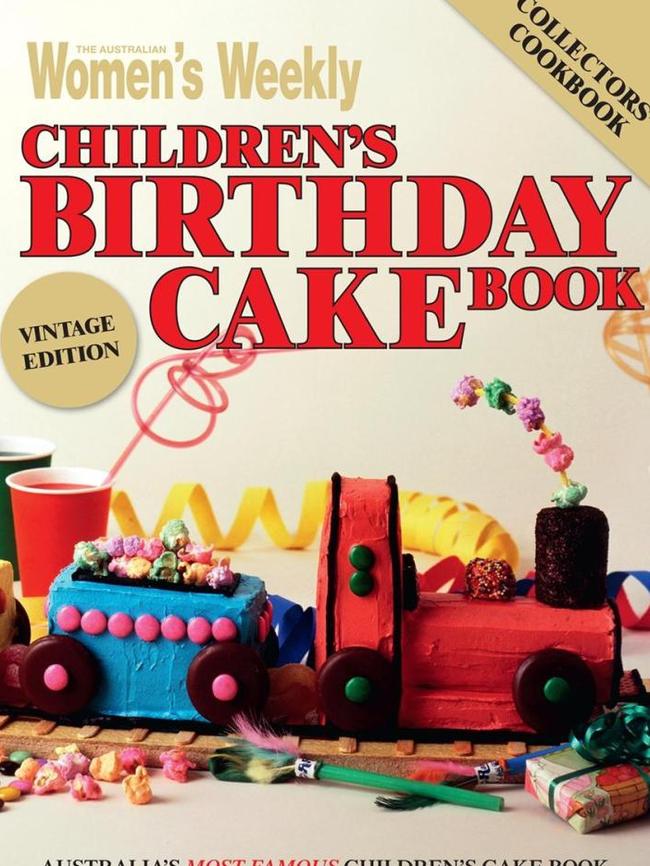

1990s THE ALL-CONQUERING CAESAR
IF one dish epitomises the 1990s in Australia, my vote goes to the caesar salad. As served in the average cafe (with bacon, fried croutons and creamy dressing), caesar salad probably had a fat content approximately equivalent to a Big Mac. But it was a salad, so it had to be healthy, right? Most food historians believe it was invented in or around 1924 by Caesar Cardini in Tijuana, Mexico. An advertisement in The Australian Women’s Weekly in 1960 offered a version that included frozen peas and croutons fried in margarine. Another Weekly recipe in the ’60s included celery, cucumber and blue cheese. By the late 1970s, anchovies seemed to be standard and most recipes included bacon.
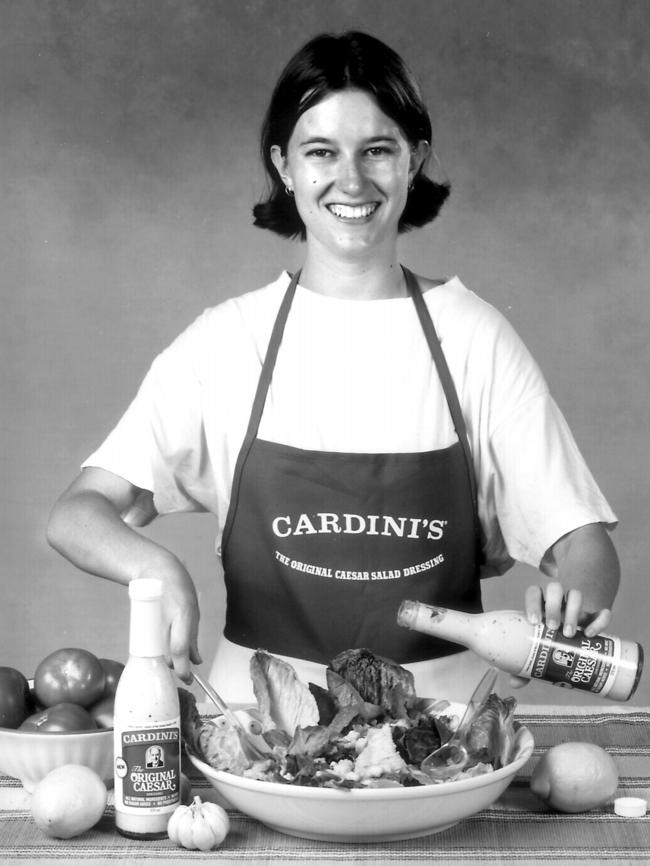
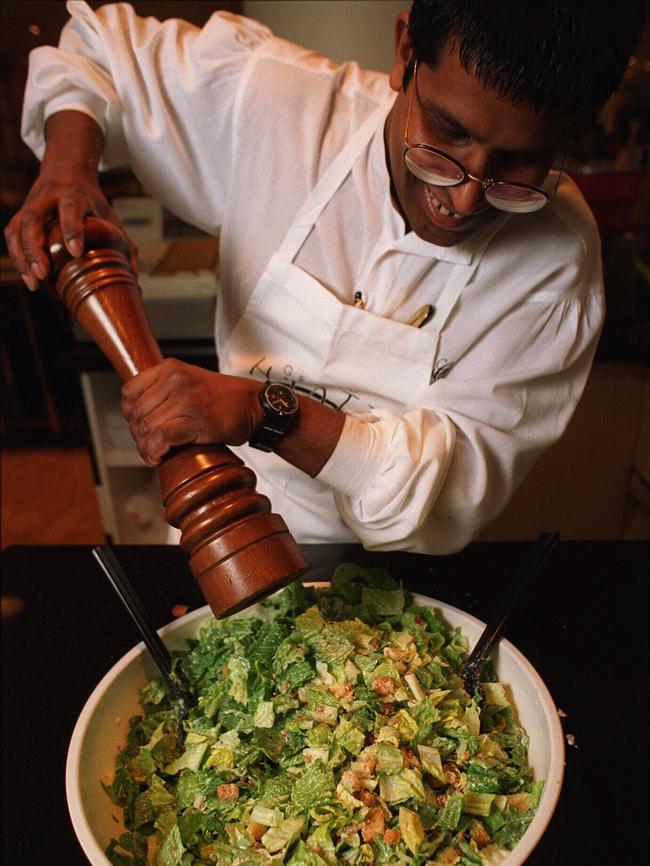
2000 BOOST JUICE BARS
BOOST Juice opened in Adelaide. Juice bars, such as Boost and Viva, proliferated, selling exotic mixes and smoothies. Anyone for a shot of wheatgrass?
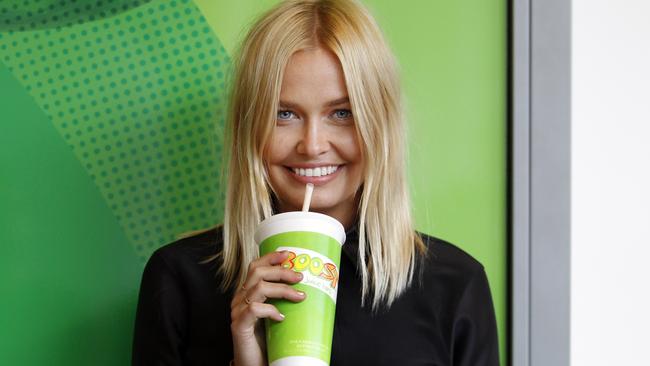
2009 MACARONS DEBUT ON MASTERCHEF
THE two meringue-based biscuits, sandwiched with buttercream or ganache filling, were popularised by celebrity chef Adriano Zumbo and even sold in McDonalds.
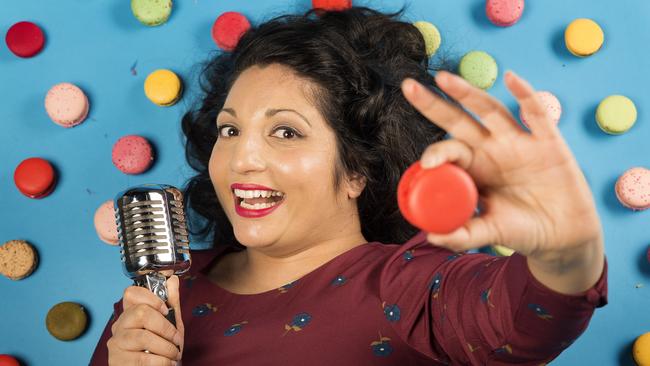
Edited extract from A Timeline of Australian Food: From Mutton to MasterChef, Jan O’Connell, NewSouth Books, RRP $35, out now
BOOK OFFER
Buy A Timeline of Australian Food: From Mutton to MasterChef, by Jan O’Connell for only $29 including delivery and receive a free tea towel. Order online at heraldsun.com.au/shop or call 1300 306 107. For mail order, post a cheque/money order to:
Herald Sun Shop, PO Box 14730, Melbourne, VIC, 8001.


